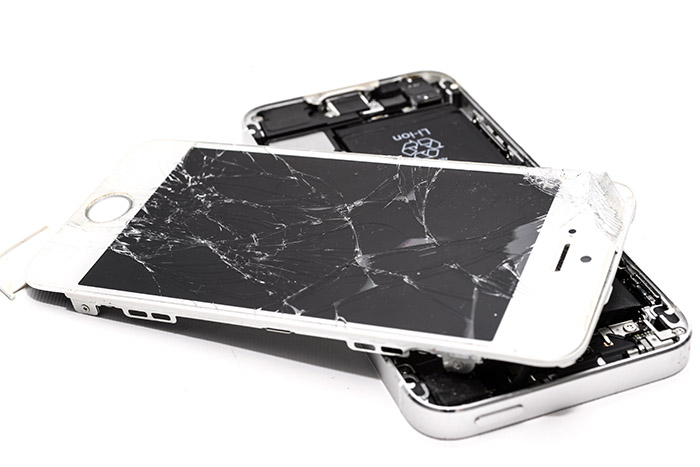The Importance Of Recycling Electronics

When people think of recycling, images of plastic jugs, empty cans, and plastic bags usually come to mind. Fewer people consider electronics when thinking about the process of reducing, reusing, or recycling — but microwaves, cell phones, printers, and computers are all made up of metals, plastics, and minerals that, if not disposed of properly, can do heavy damage to the environment.
Materials like these aren’t able to break down properly in landfills and need a specific recycling process to be disposed of safely. The problem goes beyond disposal, though, when we consider that renewable energy resources have a documented demand for minerals, the exact ones that are used to build electronics. Without properly recycling these items, we create an even greater tax on the environment by not recovering the minerals that we can.
Those who are interested in simplifying their lives, or implementing sustainable actions, should take a critical look at how they use their technology after it is obsolete. After doing so, most will discover plenty of options to recycle their electronics, the benefits associated with it, and the consequences of doing nothing.
Reduce Environmental Impact
It’s no secret that recycling and renewable energy initiatives are focused on reducing the impact we have on the environment. With disposable and cheap electronics at an all-time high, our electronic waste is among the most dangerous materials that end up in landfills. Microwaves, electronic washers and dryers, and computer monitors all fall into this category. The plastics, metals, and glasses used to make these products can negatively impact both the water and the air supply when left in a landfill, rather than being recycled.
The explosion in the production of electronics has created a drain on the earth’s natural resources like never before, creating another layer to their environmental impact. Key minerals and nutrients are used in electrical components and circuit boards, the manufacturing of which has caused an extreme strain on the earth’s natural resources. This is most notable when it comes to mobile phones, as “These components are largely recyclable, and rare earth metals can be valuable and scarce. Recapturing these materials when phones are replaced or no longer functional is a matter of both economics and environmental responsibility.”
Even as renewable energy resources continue to be developed and put into use, supporting environmental health doesn’t stop with switching to wind energy or solar power. Recycling electronics helps to close the loop in the production and distribution of renewable energy, allowing the physical products to be put back into circulation. Luckily, there are several ways to recycle materials that you can choose from.
Choose How You Recycle
You have a few recycling choices when it comes to household and handheld electronics. Many manufacturers have a recycling program, like Hewlett-Packard’s which allows you to return your components for cash, drop off at a recycling location, or return for an upgrade. Some manufacturers even have a donation program for used computer parts that helps support schools and education programs. All of these options can keep your e-waste out of a landfill.
Another option is to check your local recycling facility. In addition to the standard paper, plastic, and styrofoam that you’re used to sorting out, many local facilities have protocols for processing construction and yard waste, and, of course, electronics. These facilities are free to use, and all you have to do is drop off your appliances, which can include microwaves, vacuum cleaners, and any other electronic components.
Whether choosing manufacturer programs, availing yourself of the local waste management, or donating to programs that help underserved communities, finding an option that keeps e-waste out of the landfill is a major step in supporting a healthy environment. The options available to you, however, the best solution to electronic waste is to change your electronic shopping behavior in general.
Be Careful How You Shop
Finally, the rise of zero-waste lifestyles has brought up many questions about consumerism and where we choose to spend money. In this same vein, it’s understood by many that adopting a minimalistic mindset and deciding which items are most necessary is the first step toward a new, organized beginning. It can also help with being aware of your electronic waste.
A minimalistic mindset requires you to be aware of not only when and how you shop, but how you dispose of the byproducts of your lifestyle. With so many add ons and accessories for electronics of all kinds, being aware of what you buy, how they are made, and how they break down after you are finished with them can be especially important. By looking for eco-friendly and long-lasting options items and supporting companies that use eco-friendly packaging in their shipping, you can reduce your waste and support a meaningful cause.
Easily accessible electronics are a mainstay of our day to day lives, but even when we are considerate of the type of materials we are using, there are factors to consider when purchasing or disposing of any electronic household item. Both the creation and the disposal of e-waste can perpetuate the already massive strain on the earth’s resources. By taking the initiative to evaluate what electronics are necessary, and how to properly recycle your electronics, you can support the environment, and build a healthier consumer culture.

